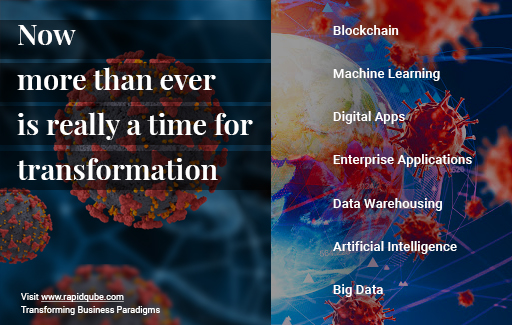Supply chain disruptions in a pandemic world
Companies will be working over the next few weeks to consider their vulnerability to possible supply chain disruption, their choices, and any short-term steps that can be taken to prevent consumer disruption.
Although the forcing feature is a terrible situation given its possible effect on human life, it is pushing businesses through their supply networks to truly grasp all the interactions and dependent variables. There was widespread reluctance in most businesses prior to the current supply chain disruption by the Coronavirus (Covid-19), where people were able to live with a little extra inventory, capacity, expedition, etc. instead of having to consider the essence of their supply network and the inherent risks at all levels and stages.
Now, more than ever is really the time to transform
There is a deliberate attempt today on all fronts to understand the network in terms of inventory buffers, supply origin, alternative supply, transport options, lead times, teamwork, and prioritization of output, along with the ability to represent these realities in the processes of Sales, Operations and Executions.
Although it was a response to a terrible crisis that is pushing many businesses to better understand their supply networks, this provided with incentives to be codified to progress forward so that supply volatility is dampened as best we can today while fulfilling customer demands with secure and effective goods in all industries.
Changes are essential but not a luxury anymore
Sustainability needs to be permanently architected into the topology of the supply network, so that when disruptions occur, collective networks can respond as a team, especially those that impact human life.
Everybody needs to make a meaningful contribution to understanding in the network that the overall network is only successful if the right product is delivered to the right person at the right time. Given that different entities have different roles to play in the network, based on their business relationship with other key stakeholders, it is crucial that they be able to quickly embark on the network with the correct position, workflow, and permissions. Throughout this process, they help to ensure a collaborative network impact that can take advantage of all the possible advantages of the recently eliminated inertia and maximize all assets for the good and protection of the end user.
Emerging Technologies are the only solution
Fortunately, we have a wealth of technologies today that can be leveraged to allow the supply network to be codified or, in other words, digitized. Now that we have eliminated the inertia and can reset the table, let’s take advantage of things like blockchain, machine learning, artificial intelligence, telematics, big data and the internet of things to really make a progress so that when the next revolution happens, we are more robust.
A main strength of these emerging innovations is precursors. When a continuous and gradual workflow for real time planning and execution is optimized across the network, businesses will be robust in their product availability and will be able to use the same workflows in a sandbox environment to analyze potential disruptive scenarios and their ability to respond rapidly to any problems.
We transform business paradigms
In this complex crisis, there are no stable outlets. While it can be expected that some industries such as consumer goods and electronics can recover rapidly, the fact that the global logistics industry is disrupted by enormous disruptive effects will impact all sectors, especially when you realize that these disruptions are increasing and growing daily.
We at RapidQube responded rapidly to the virus outbreak by globally analyzing all possible disturbances, integrating these variables into our algorithms for AI and Machine Learning, network systems such as decentralized ledgers, predictive analysis, and helping our customers to quickly identify and address current and future problems across their supply networks. These include a network that issues certificates to millions of students across the states, storing millions of health records and predicting the global trend on disease spread and consultations, building an integrated hub for a network of manufacturing processes and managing their supply chain and inventory, etc.
